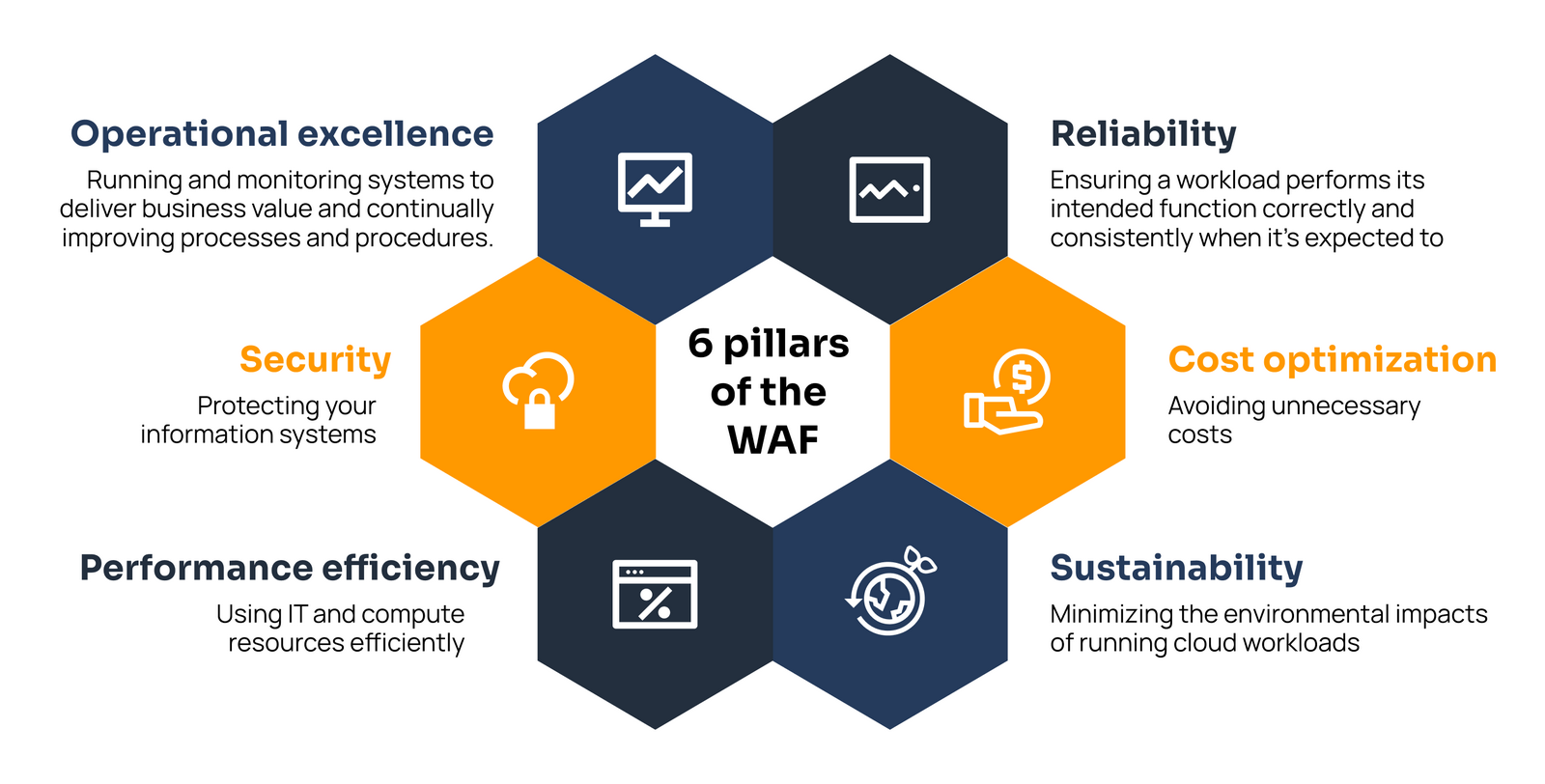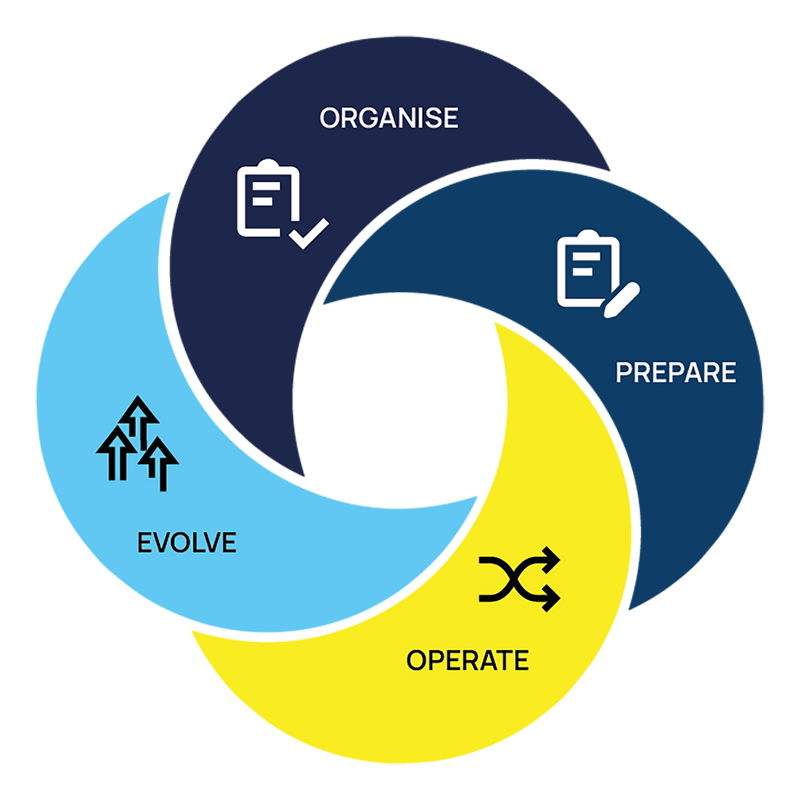A newcomer to the AWS Well-Architected Framework might see the concept of Operational Excellence as a bit vague. After all, isn’t “excellence” just something that we aspire to all the time or, at worst, a ubiquitous phrase that loses its impact through overuse? Well, In the context of AWS cloud, it has a very specific meaning and an important role to play.
Imagine you're the foreman of a new and exciting construction project, and the building site is like the digital landscape, with lots of potential but also lots of obstacles. Your team might be full of skilled craftspeople that know their trade, but without a well-thought-out plan and clear safety rules, you can’t expect things to go without a hitch.
Many cloud companies also face a range of complex challenges rather than having a simple and obvious task in front of them. Even with a capable team and the right tools, the range of issues and choices can be intimidating. This is where the AWS Well-Architected Framework, and specifically the Operational Excellence pillar, can serve as a dependable blueprint for moving ahead, ensuring that you can navigate smoothly and successfully, dealing with multiple issues at the same time.

What is the Well-Architected Framework?
Simply put, the AWS Well-Architected Framework provides guidelines for building robust and secure cloud solutions. The so-called “six pillars” of the framework address specific aspects like security, cost optimization, performance efficiency, reliability, and sustainability, ensuring a comprehensive approach to cloud architecture. Likewise, the Operational Excellence pillar exists to emphasize structural issues and the importance of refining processes to optimize for business value and performance.
The Foundation of Success
In cloud operations, having a well-structured and organized foundation is just as important as in physical construction. Indeed, a solid foundation of well-designed processes directly influences an organization's ability to deliver services reliably and securely.
Likewise, a good cloud operation also makes the most of its’ budget and materials.It minimizes redundancies, optimizes resource use, and encourages ongoing improvement. This approach also promotes reliability, proactive monitoring, swift issue resolution, and robust disaster recovery plans.
Furthermore, in the same way that a good construction project delivers a solid and dependable structure, Operational Excellence guarantees that digital services are consistently available, responsive, and secure, which is vital for business success in the cloud era.
General Principles of Operational Excellence
So, what kind of steps can you take to deliver these objectives? As ever, AWS is an excellent source of knowledge for insights and advice for putting theory into practice. They explain that “the Operational Excellence pillar includes the ability to support development and run workloads effectively, gain insight into their operations, and to continuously improve supporting processes and procedures to deliver business value” and, furthermore, that it “provides an overview of design principles, best practices, and questions.”
As such, the AWS Operational Excellence pillar guides companies in establishing a robust cloud environment by emphasizing the importance of automating operations, making frequent and reversible changes, and continuously refining processes. It helps businesses anticipate and learn from failures, ensuring they are well-prepared for various scenarios.
A Recipe for Success

More specifically, there are a few clear phases of activity and rules of approach that apply to fostering excellence in any cloud project:
- Organize: Focus on setting up a clear structure for your cloud environment, including role definitions and resource tagging, to streamline management and resource use.
- Prepare: Develop strong, automated processes for deployment and scaling to ensure consistent and scalable cloud operations.
- Operate: Maintain and manage your cloud infrastructure effectively with real-time monitoring and strong incident response to minimize downtime and ensure smooth operations.
- Evolve: Continuously improve your cloud setup by analysing performance, seeking feedback, and adapting to changing business and technology needs.
These fundamental stages of cloud deployment establish a comprehensive roadmap for operational excellence and, together, they set the scene for a cyclical process of refinement over time, rather than a single and dramatic event. But, realistically, how should you design your cloud operations to make these principles an ongoing reality?
5 design principles for continuous improvement
AWS identify five key design principles for operational excellence in the cloud that complement the above structural phases with more specific advice:
- Automate Operations: Treat cloud management like coding – automate tasks to reduce errors.
- Regular, Small Updates: Make frequent, minor updates to your system, so you can easily fix any problems.
- Continual Improvement: Keep refining your processes, adapting to new demands and testing their effectiveness.
- Plan for Failures: Identify and test for potential problems to be better prepared.
- Learn from Mistakes: Use failures as learning opportunities and share these insights to improve overall operations.

The last point emphasises the broader truth that continuous improvement is the cornerstone of operational excellence. This principle underscores the importance of evolving alongside technological advancements, through a steady progress of small, incremental changes and by nurturing a culture of continual growth and learning.
In such a way, companies can achieve remarkable strides in performance and innovation over time, with a collective drive for excellence culminating in substantial improvements that redefine the way you operate.
Example Scenarios: We’re all individuals!
Let us consider a couple of hypothetical examples to show how things might take place in practice:
- Online Retailer - Cost Efficiency Through Streamlined Operations:Imagine an online retailer aiming to optimize their cloud operations for cost efficiency. By implementing Operational Excellence principles, they identify redundant processes, optimize resource allocation using cloud-native services, and automate routine tasks. This strategic approach results in something like a 30% reduction in operational costs while enhancing response times and scalability.
- Software Development Firm - Enhanced Reliability and Scalability: Consider a software development company facing downtime issues during high traffic periods. Through Operational Excellence strategies, they restructure their infrastructure using cloud services for auto-scaling and disaster recovery planning. Automated monitoring and scaling mechanisms lead to enhanced reliability, ensuring uninterrupted service during peak demand and potentially reducing downtime by up to 40%.

However, let’s not forget that every situation is different and while these examples serve as illustrations, each scenario presents unique challenges and opportunities. Yes, it’s true — we’re all individuals! This is precisely why the Well-Architected Framework and the design principles are so useful and, by embracing them, you can become better at optimizing your own cost patterns, fortifying specific areas of reliability, and scaling efficiently to suit your individual context.
Get ready to unlock your cloud potential.
As we can see, operational excellence is a critical component of cloud computing, and the AWS Well-Architected Framework provides a solid foundation for improvement. By following these guidelines and seeking the relevant support, we hope you can take some confident first steps towards achieving your goals – and a more efficient, cost-effective cloud operation!
Further Reading
- What is the AWS Well-Architected Framework? (Insight)
- Why do I need an AWS Well Architected Review? (Insight)
- AWS Well-Architected
(AWS Guide)
Your Cloud Journey Awaits
Are you ready to take your cloud operations to the next level? With our AWS Well-Architected Framework Review service, our experts will work with you to assess your cloud infrastructure and develop a reliable route to a more efficient and reliable future.

